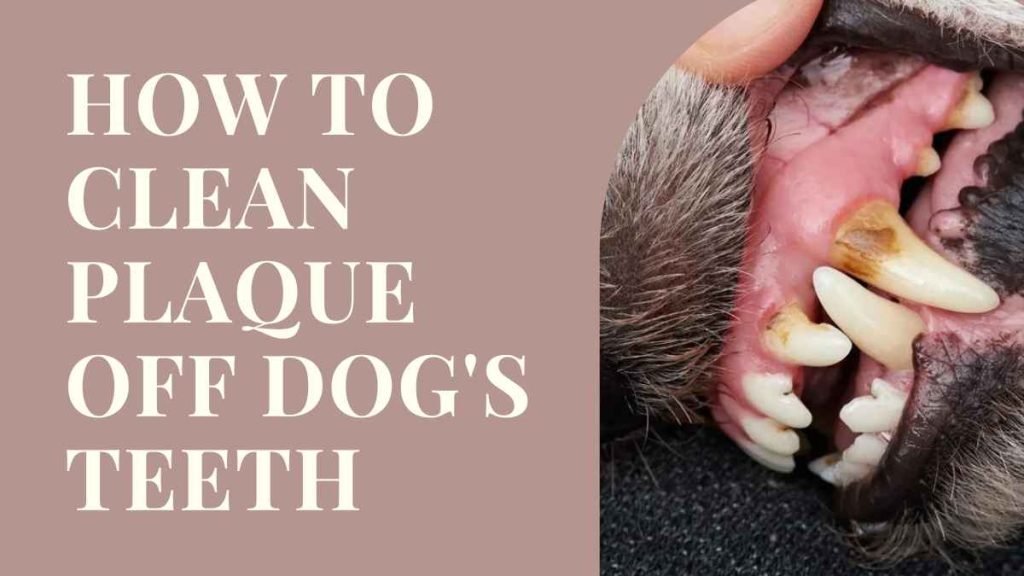How to Clean Plaque Off Dog’s Teeth! Keeping your furry friend’s teeth clean is as important as taking care of your own oral hygiene. Dogs, just like humans, are prone to dental issues, with plaque being a common problem. Ignoring plaque buildup in your dog’s teeth can lead to serious health problems down the line. In this comprehensive guide, we will explore How to Clean Plaque Off Dog’s Teeth. Here we will delve into what exactly dog plaque is, why it’s harmful, and most importantly, how you can effectively remove it to ensure your canine companion maintains a healthy smile.
Table of Contents
What Is Dog Plaque?
Dog plaque is a soft, sticky film of bacteria that forms on the teeth and gums. It develops when food particles mix with saliva and bacteria in your dog’s mouth. Over time, if not removed, this plaque hardens into tartar, which can cause gum disease, tooth decay, and bad breath in dogs.
How to Clean Plaque Off Dog’s Teeth: A Step-by-Step Guide
Here you can checkout the step-by-step guide about How to Clean Plaque Off Dog’s Teeth:
Total Time: 10 minutes
Regular Brushing
One of the most effective ways to remove plaque from your dog’s teeth is regular brushing. Use a dog-friendly toothbrush and toothpaste to gently scrub your pet’s teeth. Start slow and be patient; your dog may need time to get used to the brushing routine.
Dental Chews and Toys
There are specially designed dental chews and toys available in the market that help in scraping off plaque as dogs chew on them. These items encourage natural chewing behavior and can significantly reduce plaque buildup.
Dental Wipes
Dental wipes are convenient for dogs that are not comfortable with toothbrushes. These wipes contain enzymes that help break down plaque and freshen your dog’s breath.
Professional Dental Cleanings
Regular visits to the veterinarian for professional dental cleanings are essential. Veterinarians have the expertise and tools to remove stubborn plaque and tartar safely.
Why Is Plaque Bad for Dogs?
Plaque is detrimental to your dog’s oral health for several reasons. Firstly, it can lead to gingivitis, a painful gum disease. If left untreated, gingivitis can progress to periodontitis, causing tooth loss and damage to the jawbone. Moreover, the bacteria in plaque can enter the bloodstream, potentially affecting your dog’s heart, liver, and kidneys.

How Do I Know If My Dog Has Plaque?
Identifying plaque in your dog’s mouth requires a keen eye. Look out for signs such as bad breath, yellow or brown deposits on teeth, swollen or bleeding gums, difficulty chewing, and excessive drooling. If you notice any of these signs, it’s crucial to take action promptly.
Prevention and Maintenance
Balanced Diet
A well-balanced diet not only promotes overall health but also contributes to good oral hygiene. Provide your dog with high-quality dog food and avoid excessive treats or sugary snacks.
Regular Vet Checkups
Schedule regular dental checkups with your veterinarian. They can detect early signs of dental problems and advise you on the best oral care practices for your dog.
Avoid Human Toothpaste
Never use human toothpaste on your dog, as it contains ingredients like fluoride that can be harmful if swallowed. Use toothpaste specifically formulated for dogs.
Common Mistakes to Avoid
- Neglecting Dental Care: Ignoring your dog’s oral hygiene can lead to severe dental issues. Regular maintenance is key.
- Forceful Brushing: Be gentle while brushing your dog’s teeth. Using excessive force can hurt their gums and create negative associations with brushing.
- Ignoring Professional Help: If your dog has significant plaque buildup, don’t hesitate to seek professional dental cleaning from your vet.
Tips and Tricks
- Start Early: Introduce dental care routines to your dog at an early age to make them accustomed to the process.
- Positive Reinforcement: Reward your dog after each brushing session or when they use dental chews, creating a positive experience.
- Be Patient: Building a dental care routine takes time. Be patient and consistent in your efforts.
Facts About Dog Plaque
- Dogs, regardless of breed or size, are susceptible to plaque and tartar buildup.
- Small dog breeds are often more prone to dental problems due to their crowded teeth.
- Plaque buildup can start as early as six months of age.
Conclusion
In conclusion of How to Clean Plaque Off Dog’s Teeth, taking care of your dog’s oral health is an essential aspect of responsible pet ownership. By understanding the importance of regular dental care, recognizing the signs of plaque buildup, and employing effective cleaning methods, you can ensure your furry friend enjoys a happy and healthy life with a dazzling smile. Here you can checkout that How Long to Wait After Teeth Cleaning to Eat.
FAQs About How to Clean Plaque Off Dog’s Teeth
How often should I brush my dog’s teeth?
Ideally, you should brush your dog’s teeth at least 2-3 times a week. Daily brushing is even better for optimal dental health.
Can I use homemade toothpaste for my dog?
It’s best to use toothpaste specifically formulated for dogs. Homemade toothpaste may contain ingredients that can be harmful to your pet if ingested.
Are there breeds more prone to dental issues?
Yes, small dog breeds are often more susceptible to dental problems due to their smaller mouths and crowded teeth. However, all dogs are at risk, regardless of their size or breed.
My dog hates having its teeth brushed. What can I do?
Start slow, use positive reinforcement, and be patient. Gradually introduce dental care routines and reward your dog with treats and praise to make the experience more enjoyable.
Can dental chews replace regular brushing?
While dental chews can help reduce plaque buildup, they are not a substitute for regular brushing. Brushing remains the most effective way to maintain your dog’s oral hygiene.
Is anesthesia necessary for professional dental cleanings?
Yes, professional dental cleanings require anesthesia to ensure the safety and comfort of your dog. Anesthesia allows veterinarians to perform a thorough cleaning, including scaling and polishing, without causing stress or discomfort to the pet.
What happens if plaque buildup is not treated?
If left untreated, plaque can harden into tartar, leading to gingivitis, periodontitis, tooth loss, and potential systemic health issues. Regular dental care is essential to prevent these complications.


